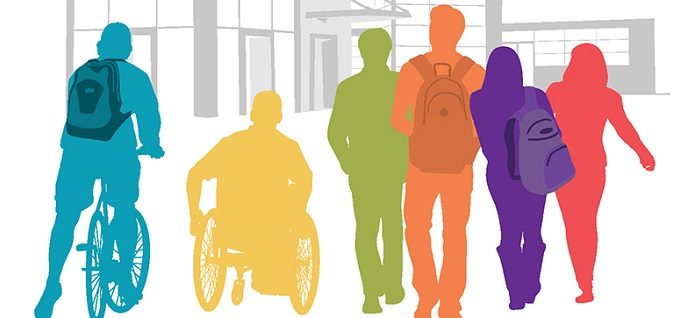Improving job prospects for people with disabilities
By Jolanta Juszkiewicz
August 22, 2018
Educational attainment can make a big difference in whether people with disabilities are part of the workforce.
The unemployment rate for adults ages 25 and older with a disability is more than twice as high as that of adults of the same age without a disability (8 percent and 3 percent, respectively), according to federal data.
In addition, the rate at which they were employed was significantly lower than their counterparts without a disability (18 percent and 69 percent, respectively).
As troubling as these findings of a recently released U.S. Bureau of Labor Statistics report, are for people with disabilities, it is even more concerning that they show only a partial picture of the true state of their participation in the workforce.
In fact, it is misleading to say the official 2017 unemployment rate for people with disabilities is 8 percent knowing that only about one-fifth of adults in this age group with a disability are counted as part of the workforce. The reason is that the official unemployment rate excludes people not actively looking for jobs — from retirees to non-working students and a significant number of people with disabilities. This compares to a workforce participation rate of 71 percent for adults without disabilities.
Higher ed makes a difference
The level of educational attainment makes a big difference in whether people with disabilities are part of the workforce. In 2017, people with disabilities who had some college or an associate degree were nearly 46 percent more likely than those only with a high school diploma to participate in the workforce (24 percent vs. 17 percent, respectively).
The difference was even larger for those holding a bachelor’s or higher degree. People with disabilities who had some college or an associate degree had a 7 percent higher employment rate than their high school graduate counterparts (22 percent vs. 17 percent). Having a bachelor’s degree gave another 5 percent boost to the employment rate. Education also provided a buffer against higher unemployment rates.
The schools of choice
In terms of their higher education, students with disabilities disproportionately attend community colleges. According to U.S. Education Department data, for academic year 2015-16, of the undergraduates who reported having a disability, nearly half (46 percent) enrolled in a community college. Another 39 percent chose to attend a four-year institution, 26 percent public and 13 percent private not-for-profit institutions. The remaining 15 percent of students with a disability enrolled in other types of institutions, including for-profit institutions and various non-degree granting institutions.
One out of five students enrolled in a community college reported having some type of disability in 2015-16. This is an 8 percent jump from 12 percent of such students enrolled in community colleges four years earlier in 2011-12. Because the data are self-reported, it is difficult to discern whether the increase is due to more students reporting a disability, which may be related to including more disability categories, or an actual increase in the number of students with disabilities attending community colleges. Four-year institutions had a lower percent of students with disabilities enrolled, about 17 percent. Only degree-granting, for-profit institutions have a higher percent of students (25 percent) with disabilities.
AACC is working on a new report that focuses on the experiences and outcomes of students with disabilities who enroll in community colleges.
This article originally appeared in CC Daily.



